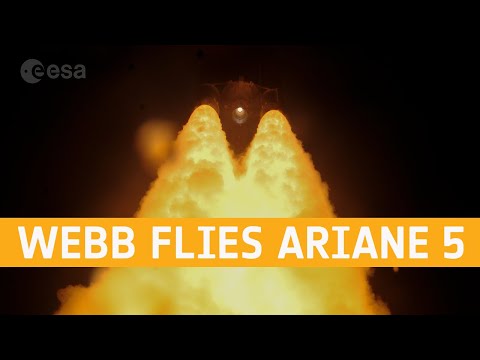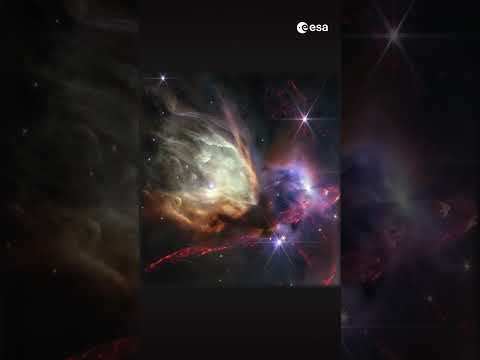Get ready for sharper views✨ #Shorts
This comparison between @NASA’s Spitzer Space Telescope’s Infrared Array Camera and Webb’s Mid-Infrared Instrument shows a part of the Large Magellanic Cloud. A small satellite galaxy of the Milky Way providing a dense star field to test Webb’s performance.
Background content credits:
Spitzer: NASA / @NASA Jet Propulsion Laboratory – @caltech
MIRI: NASA/ ESA / @Canadian Space Agency / STScI
Webb telescope deployment animation: ESA/ATG medialab
Webb MIRI imaging-mode animation: ESA/ATG medialab
★ Subscribe: http://bit.ly/ESAsubscribe and click twice on the bell button to receive our notifications.
Check out our full video catalog: http://bit.ly/SpaceInVideos
Follow us on Twitter: http://bit.ly/ESAonTwitter
On Facebook: http://bit.ly/ESAonFacebook
On Instagram: http://bit.ly/ESAonInstagram
On LinkedIn: https://bit.ly/ESAonLinkedIn
On Pinterest: https://bit.ly/ESAonPinterest
On Flickr: http://bit.ly/ESAonFlickr
We are Europe’s gateway to space. Our mission is to shape the development of Europe’s space capability and ensure that investment in space continues to deliver benefits to the citizens of Europe and the world. Check out https://www.esa.int/ to get up to speed on everything space related.
Copyright information about our videos is available here: https://www.esa.int/ESA_Multimedia/Terms_and_Conditions
#ESA
#Webb
#WebbSeesFarther





So cool. Beautiful too
Beautiful.
Beautiful
First impression looks like a Christmas card second thoughts, freakin spectacular.
Is there an image of the same group of stars from Hershel somewhere? From what I know it should be something between Spitzer and Webb in quality.
shorts = subrictions minus
every short decreases your credabilitity! no more shorts if you want to be taken seriously. Substance or nothing.
stop wasting my time
EuropeanSpaceAgency: NASA : The speed of flight engines must be developed in order to travel between planets and stars, as well as for the
momentary transition between the countries of the world on planet Earth
Therefore, we hope that engineers will develop new plans and techniques for the manufacture of the engine device
(EM Drive)
"In an ongoing effort to find a faster and more efficient way to place spacecraft on Mars, NASA’s Eagleworks
Laboratories scientists have made great strides in violating the laws of physics in this process.
In a peer-reviewed Journal of Propulsion and Power, Eagleworks presented a report on its findings reported on its
amazing results from experiments on electromagnetic propulsion systems (EM Drive).
How Does It Work?
Using electric waves such as microwaves, these photons crawl inside an empty, copper, cone-shaped room, which
produces a push.
In contrast, the ion drives used in NASA’s modern spacecraft create energy by injecting ionizing propellant (usually
xenon gas), as well as emitting charged atomic radiation. No propellants or exhaust enters or exits the engine,
violating the basic law of physics.
(We ask you to ask technicians and engineers to develop designs and innovations for the success of the project to
travel at the speed of light in order to turn science fiction into an enjoyable reality)
❤️
Psyched